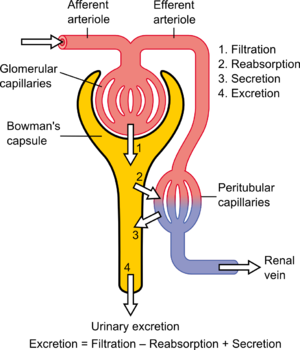 Image via WikipediaThis is the age of technology for sure. We have to become acquainted with the various elements of this age in order to take care of ourselves.
Image via WikipediaThis is the age of technology for sure. We have to become acquainted with the various elements of this age in order to take care of ourselves.Diabetics are known to hae kidney disease from the clogging up of those tiny vessels used during filtration. The kidney is after all, a beautiful filter.
Often we are subjected to radiography with a contrast which helps to show the organs or place of interest more clearly. We are asked to have a Creatinine clearance blood test to evaluate the condition of our kidneys. This helps decide which contrast to use. The kidney after all, has to filter out any foreign substance. The contrast is considered by the body to be just that. However, a non ionic contrast has less 'irritation' and the kidney filters with fewer undesirable side effects.
SO why doesn't the radiology lab or the doctor automatically request a non ionic or gentler contrast to begin with? Well, I did some research regarding this. The best I could find, even after calling my own radiology lab is in the Tabor's Cyclopedic Medical Dictionary,Edition 18. (1993)
It states information regarding many contrasts. Here's what it said about the 'nonionic' contrast which for me would be the most favorable because I don't HAVE kidney disease and don't WANT to have kidney disease.
"nonionic c.m. water soluble contrast medium.......These agents tend to have low osmolarity, and decreased patient adverse reactions but they are quite expensive."
There we go. More expensive. Actually WRITTEN in the text book!
I am currently asking for the more kidney-friendly contrast. I feel that as a diabetic, I MUST protect my organs as best I can from outside irritations when at all possible. Since I am a diabetic, I should be given gentler preparations in order to 'protect and defend' during procedures.
I am going to research the difference in price just in case I am asked to pay the difference at some time in the future.
Get acquainted with these matters............................because it might matter.

No comments:
Post a Comment